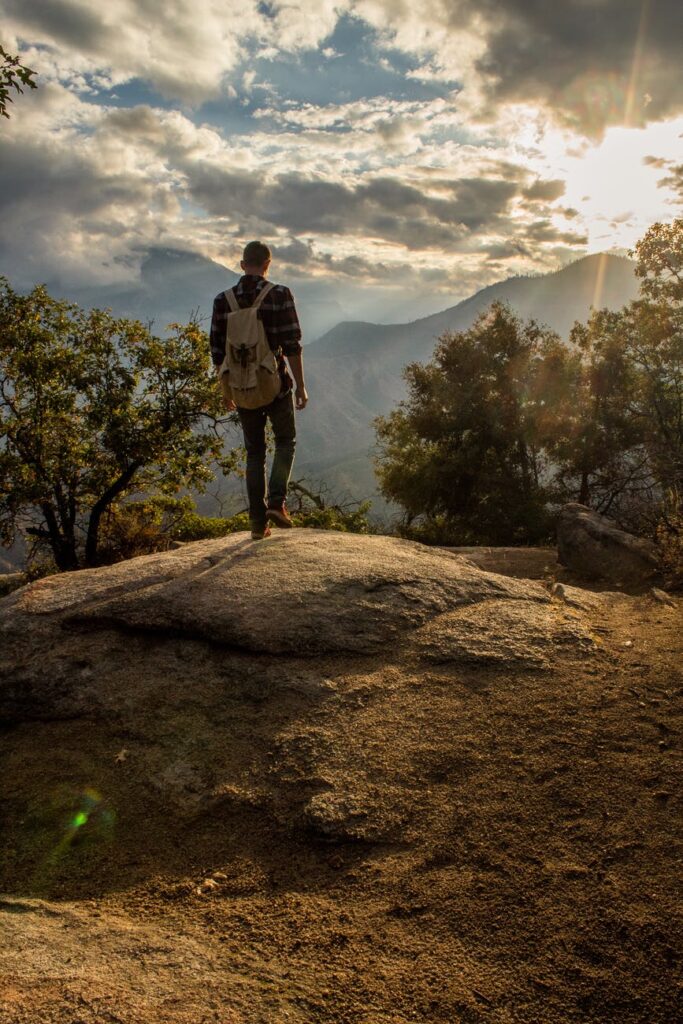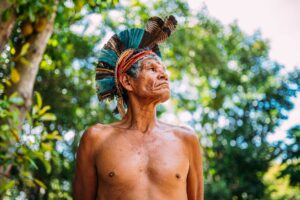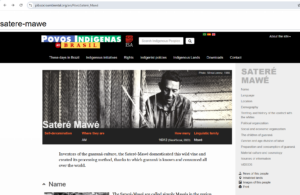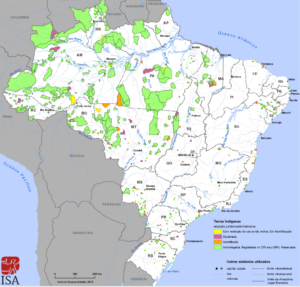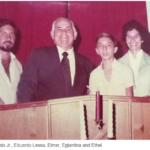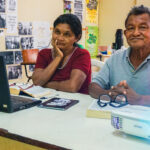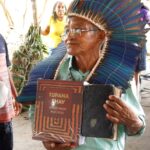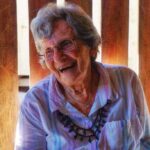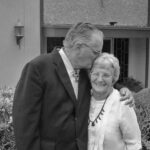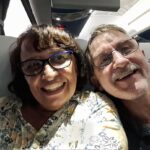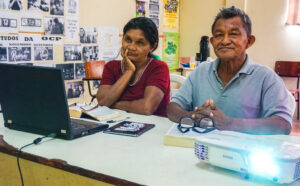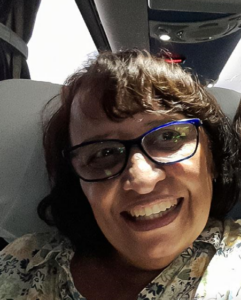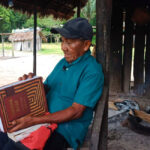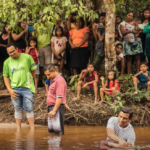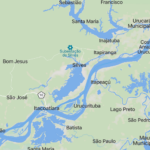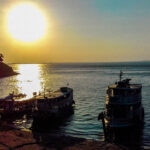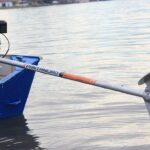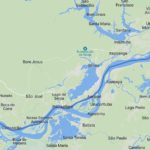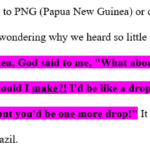How can we share the gospel of Jesus Christ in a language that has no written word…?
Although I wanted to go to PNG (Papua New Guinea) or other places where all the action was, I was challenged wondering why we heard so little about Brazil and why so few people were going to Brazil. Then, God said to me, “What about you, John?” I replied, “Who me?! What difference could I make?! I’d be like a drop of water in the ocean…?!” To which God replied, “Yes, but you’d be one more drop!”
John Wilkinson-
God’s Word – TUPANA EHAY
Brazil faces an undeniable crisis within its indigenous populations. Many of these indigenous groups live and communicate in their native languages yet lack a written form for these languages. Translating the Bible into native languages transforms sharing the Gospel of Jesus Christ into a heartfelt labor of love for missionaries. Can the absence of a written language interfere with Christian missionaries delivering God’s miracle to the Brazilian Amazon Interior?
Authorized Derivative Work By: Nathan W. Hoff
Original Format for Article By: Nathan W. Hoff
Based on Missions Geographic Magazine Interview with….. Missionary and Bible Translator John Wilkinson
Written: December 20, 2024
Published Online: February 1, 2025
Introduction
Imagine having the greatest story known to humanity and you had no ability to get your friend to understand some of your words – although they may have understood most of what you were saying, they could not completely understand why you think it is the greatest story ever. Your story would not make sense – as important pieces would not have translatable meaning to the one hearing the story.
This somewhat illustrates how it is with sharing the Gospel of Jesus Christ with people groups who do not have an established formal written language. Even though they may have a spoken language there are words or even concepts that just are not readily available in their native tongue to translate the meaning of the story you are telling.
This is much what it must be like for those who spend their lives translating the Scriptures. These decoders of languages have the greatest story that humanity has ever witnessed through Jesus Christ, but the words are not readily available.
This article will introduce the reader to the Brazilian, indigenous people known as the Sateré-Mawé. The reader will become acquainted with some key missionaries who played a pivotal role in translating the Bible for the Sateré-Mawé. Additionally, two faithful servants who were part of the missionary and translation teams are interviewed; providing personal insight to the role of God’s servants in the field.
Because of missionaries such as these some of the Sateré-Mawé people, after salvation, have been sharing the greatest story that humanity has ever witnessed. Each sharing the Gospel of Christ in their own written native language. Missions Geographic Magazine is celebrating the exciting news that:
God the Father is still sovereign in all regions and in every corner of the world! God sends His teachers and pastors to minister to the needy and His accomplishments are nothing less than spectacular…
Importance of Cultural Awareness
Missionaries are educated on the importance of cultural appreciation. They know without having a clear understanding of a people’s culture, language, rituals, and superstitions, among other considerations; missionaries will have a lower-than-expected acceptance into the tribe / people group as a trusted member.
Cultural appreciation is why translating the Bible into an unfamiliar language takes years to complete – translation encompasses years of building trust with the people often before the first word is ever translated.
John Wilkinson shares:
“It also takes many years of study to achieve the level of fluency in the language and culture necessary to build doctrinal concepts, search for spiritual terminology, and efficiently translate God’s word.”
Who are the Sateré-Mawé ?
According to an article from the Povo Indigenas No Brasil when translated from Portuguese to English means, Indigenous people in Brazil; the English translated meaning of the name Sateré-Mawé people is derived in the first part as the name of the ruling clan (Sateré meaning “burning caterpillar”) and in the second part (Mawé meaning “intelligent and curious parrot”).[1]
The language has a unique story of its origin and linguistic family, Povo Indigenas No Brasil describes the language as:
The Sateré-Mawé language is part of the Tupi linguistic branch. According to ethnographer Curt Nimuendaju (1948), it differs from the Guarani-Tupinambá. Pronouns are the same as those of the Curuaya-Munduruku language, and the grammar is, it seems, Tupi. But the Mawé vocabulary contains elements that are entirely different from Tupi and cannot be related to any other linguistic family. Since the 18th Century their repertoire includes many words from the Língua Geral (the language spoken in colonial Brazil until the late 18th Century, a mixture of Indians languages and Portuguese).
Today most Sateré-Mawé men are bilingual – they speak their own language and Portuguese; women, on the other hand, tend to speak only Sateré-Mawé, despite this people’s three centuries of exposure to the national society.[2]
The Sateré-Mawé live in the region of the mid Amazon River, on the border of the Brazilian states of Amazonas and Pará. With a total area of 788,528 hectares which equates to 1,948,495.1224 acres.[3] This is a land size of 3,044.524 square miles. Slightly, bigger than the state of Delaware’s 2,489 square miles.[4]
Imagine how many distinct language variances could exist in the American state of Delaware alone – It is then not hard to imagine the possible myriads of variances which could present themselves within an entire distinct people group with their own unique language. It would reason that translating any written word let alone the Word of God is a monumental undertaking.
Comment by John Wilkinson: Although there are differences in vocabulary between the Sateré people, who live on 7-8 different rivers, there are insufficient differences to qualify for a separate dialect which would require around 50% difference.
The people from the different rivers often travel to other rivers and I can personally vouch for the fact that the people can totally understand each other having travelled to other rivers myself and finding that I am also able to understand folk from the Marau, Urupadi and Miriti rivers.
However, although the differences don’t warrant a separate Bible translation (IMO), this in no way diminishes the difficulties of the task of Bible translators which is totally God’s work, and our work is to totally depend upon Him moment by moment as He uses us to translate His word.
Indigenous Lands – Brazil
Sateré-Mawé Language
Missionary to the Sateré-Mawé and Bible translator John Wilkinson shares with Missions Geographic Magazine that there isn’t a specific word for “HELLO” in the Sateré language.
Generally speaking, when people greet each other, they may use a variety of terms such as good morning – ihot’ok, good afternoon – he’ika’at, or good evening – wãtym. But a common greeting when people say “hi” is a word which really is used to ask how the person is doing, i.e. waku – which literally translated means good. But when used in the context of a greeting it can mean “how’s it going,” “how are you doing,” ” Is everything good?”
Servants Behind the Translation
As this article unfolds you will be introduced to some of the biblical translators along with a few of their Sateré-Mawé helpers. It is nothing short of stating the obvious as you will observe the number of people God has used and is still using today to ensure His Word is properly presented to the Sateré-Mawé population.
The translation for the Sateré-Mawé is greatly due to the founder of Amazon Vida (Amazon Life), Pastor Eduardo Lessa, and missionaries Alberto and Sue Graham, in partnership with John Wilkinson with the help of his missionary spouse Sonia.
There are several Sateré-Mawé who also have contributed their help such as the late Sateré-Mawé man named Sewu who later became a respected chief, politician, and spiritual leader. Then Maxico who is Sewu’s son. Maxico and his wife Jovina were translation helpers for Al and Sue Graham and continue to help John Wilkinson in the revision of the Graham’s Bible translation. Both chief Cain (a firm believer) and later Chief Antonio (uncertain) were instrumental as firm believers and supporters. Elso, (uncertain) the son of Chief Antonio carried on his father’s support by working as a translator.
A translation of any type requires devoted laborers. However, a translation of this magnitude is simply a miracle. [Prior to this article going to publication John shared with Missions Geographic Magazine this previously unknown comment: “A long time ago I noted down inside the cover of my Bible, “Each verse translated is a miracle!”]
God has gathered faithful helpers to deliver His miracle, the Bible is known to the Sateré-Mawé as TUPANA EHAY which translated into English equates to GOD’s WORD.
Translation Team Snapshot
Our story of God’s miracle begins in the early 1950’s as the founder of Amazon Vida (Amazon Life), Pastor Eduardo Lessa, was working in the Brazilian Amazon interior with the indigenous people known as the Sateré or Sateré-Mawé. It is during the early 1960’s that Pastor Lessa and the Grahams (Alberto (Al) and Sue) would form a zealous and faithful partnership in the arena of biblical translation. This team of missionaries worked long and faithfully on translating God’s Word into the Sateré-Mawé native language.
Sue, and her husband Alberto, known to all as Al, were Christian missionaries. These pioneers in biblical translation are accredited with the early works of translating the Bible into the Sateré-Mawé native language. The Grahams were charged with a monumental undertaking since there was no written Sateré-Mawé language until their Bible translation.
Early in their lives the Grahams lived with the Sateré-Mawé people. This dedication to their cultural awareness resulted in the Grahams being adopted as family on the Sateré reservation – but their ministry was not without enemies and opposition among the Sateré people. After Pastor Lessa, and Al Graham had gone to be with the Lord, Sue, continued this important work for serval years. But there came a time when Sue had to retire and leave the Sateré Bible translations in the hands of another.
As the years passed Sue Graham was no longer healthy enough to continue the work that she and her husband Al both loved and faithfully worked. Prior to 1996, a faithful Brazilian Christan named Sonia, had worked with the Grahams in Vila Nova, Brazil. Sonia later married John Wilkinson, and together they started working in the Sateré-Mawé village of Vila Nova in 1996. As a married couple the Wilkinson’s only had sporadic contact with the Grahams. The biblical translation responsibilities were passed to John, who was assisted by his wife Sonia and others within the community.
Al died in November of 2010. After his death, in January 2011, Sue called John Wilkinson to ask if he would be willing to form a partnership with her to finish Al’s translation. John immediately agreed telling Sue, “Our work is one and the same”. Over the next few years, a number of trips were made out to Vila Nova where they would worked on completing the Bible translation, which was finished in 2016, published and presented to the Sateré people at the dedication service in Vila Nova in 2017.
On one of the last trips Sue made to the tribe she passed the responsibility on to John Wilkinson for the translation work, printing scriptures, etc.
A farewell article for Sue Graham is featured in the link below.
Farewell to Sue Graham: https://www.amazonvida.org/post/2024/farewell-to-sue-graham
Missionary Interview
Mission Geographic Magazine is pleased to present from John Wilkinson – A brief glimpse into his mission journey and Bible translation contribution.
The following is from an interview with John. It is an honor to highlight his commitment to serving God.
We are also pleased to highlight in her own words, Sonia Wilkinson’s personal missionary story and devotion to the Sateré-Mawé.
Discover the who, what, and why that led them to serve God through the Sateré-Mawé people.
Missions Geographic Magazine Interview

Missionaries John and Sonia Wilkinson

Describe Your Connection with Al and Sue Graham
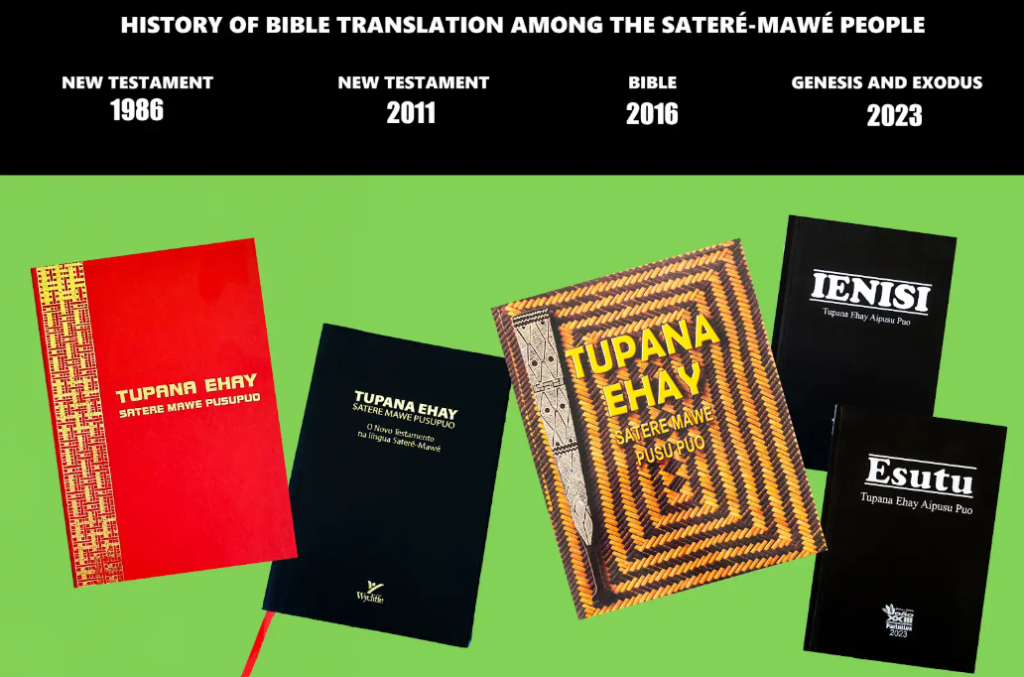
Their work began with the Sateré-Mawé people in 1960. At that time, they found a people group of around 3,000 to 4,000 being decimated by illnesses, etc. In 1986, the Grahams published the New Testament (Red hard cover).
Before he died Al, was talking about several different ideas such as cheaper ways to publish, by sending the New Testament to China, printing on India paper, etc. Then, in 2011 a black vinyl covered, India paper, New Testament was printed. John notes that he isn’t exactly clear on the details of how the 2011 version was printed since Al Graham died in November of 2010.
I think it was January of 2011 when Sue got in touch with me asking if I would be willing to form a partnership with her in order to finish Al’s translation of the Bible as there were several portions which had either partial, or no translation done. I replied, “Of course, Sue, our job is one and the same!” So, we began our journey together during 6 plus years making numerous trips by plane from the Amazonian city of Parintins to the Sateré-Mawé village (Vila Nova) to translate as yet untranslated portions and correct some of the previous translations of Bible portions. Sue was always accompanied by one of her daughters during these trips due to her age and the family’s concern for her health and safety.
Then, in 2016 the Bible was published, and in 2017 a celebration service was organized in Vila Nova. Many Sateré people were present, Sue and a number of folks from her church, Shadow Mountain, came including pastors and Sue’s friends. We were flown in by Cessna with the help of pilots from SIL/Wycliffe and also an independent Swiss Baptist pilot and great friend. It is impossible to convey the size, importance, and logistical planning for this event. I have tons of photos but only those who were present can really appreciate all that God did during those days!
What was Your Part in the Biblical Translation for the Sateré-Mawé?
When we started working in the village, Vila Nova in 1996, Sonia already knew the Graham’s because she had worked there for a couple of years as a single missionary. So, we had sporadic contact over several years with Al and Sue. Al was like a father and a friend and Sue was like a mother and a friend.
I started translating Genesis around 2000-2001. Then, after receiving some formal training through an American consultant from New Tribes Mission I began to understand better how to translate the Bible.
During his life Al Graham did most of the Bible translation. But when he died in November of 2010; Sue felt that she wanted to finish the translation. She asked me if I would be willing to form a partnership to help translate portions which had not yet been translated. We worked together on this for around 6 to 7 years. So, I had been an active member of the translation project for a number of years.
There are several reasons why both Sue and her family and the pastors from her church felt that a revision of the Bible translation was necessary which was discussed during the time we were together in the village in 2017, and I was tasked with this responsibility.
How was the Native Sateré-Mawé Pastor Maxico Involved in Translations?
When Al and Sue arrived in the village, they met much resistance and the only person who wanted to help was a man called Sewu (i.e. Servo). At that time Sewu was just a villager. But sometime after the previous chief of Vila Nova died Sewu married the chief’s widow, Elpidia. Over time Sewu became a respected chief, politician, and spiritual leader. Sewu helped Al for around 40+ years with the translation.
Maxico is Sewu’s son and was also involved for around 40 years helping Al. When Al died Sue continued using Maxico and his wife Jovina as translation helpers. Working together with Sue in the village we often used Maxico and Jovina together although I often used another Christian brother to help me.
Which Sateré-Mawé Chief was Your Main Contact from the Village?
Initially we had contact with chief Sewu, Pastor Maxico’s father. When he died, we had contact with chief Cain – also a firm believer. Later, we moved to another village, Nova Amerika (New America) where the chief was called Antonio who came daily to our house to hear the word of God stating that he was hungry. Unfortunately, he died before reaching 60 and his son Elso took his place. Elso was my translation helper for a number of years from 2000 till about 2009.
John’s Lifetime Partner Through It All
John speaking about his wife Sonia, noted, “As God has enabled us with different gifts, Sonia, has never been directly involved with translation. Although I am greatly indebted to her because without her capable involvement and support the translation could never have become a reality! Sonia’s ministry was directed towards literacy, hence the primer she created.”
He continues, “Sonia also developed a number of social development projects which really helped the people and helped develop lasting friendships. She was often needed to help with the first aid needs of the people, and she is very gifted at making connections with people.”
In Her Own Words Sonia’s Missionary Journey
I come from a mixed religious family where my father was a Catholic but later my mother got saved. She would take us to a Baptist church where I later got saved. As a young Christian I wanted to be a missionary but my Pastor said that I was young and should wait. When I talked with him again after one year, he said that the church only supported missionaries with the Baptist Missionary Society, but he could see that my desire to be a missionary was from God and he gave me his blessing to begin training with New Tribes Mission (NTM) in Brazil.
I began studying at the NTM Bible Institute, Peniel, in Brazil, in 1975 and later went on to do the missiological and linguistic training courses with NTM. I believed that God wanted me to go to India to work together with a missionary friend. At that time there were several other missionaries that I studied with who were also trying to go to India.
First, I spent two years with another single missionary girl among the Sateré-Mawé people in the Amazon region of Brazil in order to get some transcultural experience. We taught literacy to around 70-80 people. There were both good and difficult times there in the village.
Then, I travelled to the NTM Bible Institute in the United Kingdom in order to learn English and apply for a visa to go to India. But after ten months of communications with an Indian missionary agency, consulate, etc., I found that I was unable to get a visa. The Director of the Indian missionary agency told me that they would love to have me but due to the fact that they only worked with natives I needed to make sure that it was God’s will for my life because, as a foreigner, my presence there could put the missionary agency at risk of being closed by the government. So, I resolved not to put the agency at risk!
During my time in the United Kingdom, I got to know John Wilkinson and we became friends. He felt led by the Lord to go to Brazil as a missionary. He wanted me to help him learn Portuguese and he helped me with my English. It wasn’t until I discovered that I could no longer go to India that John talked with me about dating. We started dating and I then returned to Brazil, and he went to the USA to continue the NTM missionary training.
Later in 1987, we got married, finished the training with NTM in Brazil and moved to Manaus, Brazil to begin working as missionaries. God led us both to return to the Sateré people where I had worked as a single missionary. We learned the language and culture, faced numerous difficulties, but God brought us through those times and helped us to make friendships with the people, taught the Bible to some of the Sateré people, created social development projects, taught literacy, helped with first-aid needs, and finally John got involved in translating the Bible for the Sateré-Mawé people .
The Sateré-Mawé Response
We have always worked on the basis that God allows us to choose to believe the gospel of His Son. The Satere people have not been coerced to accept the gospel. Rather, God’s word has been presented to them and initially when Al and Sue Graham were there at the beginning of their ministry there was strong resistance from most people. But to God’s honor and glory and praise and the way He has empowered missionaries to persist over the years out of a population of around 18,000 to 20,000 people spread over a huge area (approx. 780.000 hectares), on seven to eight different rivers, living in Brazilian cities such as Manaus, Parintins, Barreirinha, Nova Olinda do Norte, etc.
The last time I heard the number of Christians within the Sateré-Mawé people group was around 2,000 or so and growing. There are Satere Pastors and missionaries reaching out to their own people, and a good number of churches and congregations which are not without difficulties. The area is huge, there are many social needs and problems and there are too few missionaries to do all that needs doing; the logistics are very challenging to say the least!
From Civilization to Our Sateré-Mawé Family
Initially when we arrived in Manaus, Brazil to begin our ministry, we used river boats with a capacity of around 200 passengers mostly in hammocks to go from the city of Manaus downriver to the city of Parintins which is a journey of about 18 hours approximately a (380 KM or 236 miles trip in a straight line – but the Amazon river doesn’t run in straight lines). From there we would get a much smaller boat, around 60 passengers, which would take us overnight to a certain point up the Andira river. (See map of this river area below)
Then, we would “hitch” a ride in one of the canoes with the Satere people using a gasoline engine with a drive shaft and a propeller called “rabeta” in Portuguese which very literally translated means an engine with a tail but can also refer to the canoe using such an engine.
There were difficulties such as knowing how to tie a hammock up in the boats because at the beginning I had no idea, cramped sleeping conditions, cold wind, noise from the boat’s sound system and engine, sometimes people drinking or smoking, hours sitting in a canoe sometimes during the day getting burned by the sun, sometimes at night risking getting speared by branches sticking out over the river.
The conditions were much worse during the dry season, meaning that instead of around 4 hours the journey could take a whole day sitting on a hard wooden bench. The whole journey from the city of Parintins, Brazil to Vila Nova, Brazil which is about 90 nautical miles in a straight line when you fly and maybe about 150 plus miles by river taking about 18 to 24 hours by boat and 30 minutes by plane!
What Led You to this Particular Mission?
That’s a long story, but I will try and keep it short. Although I’m from a Christian family; I got saved when I was 19. I went back to church and tried to learn about Christianity and what it meant to be a Christian. After 3 years as a Christian, I was getting a bit disillusioned because I couldn’t find all the answers, I felt I needed. I thought that what missionaries talked about when they visited my church seemed like an adventure, but I had no Idea what missions or missionaries were all about!
When I heard about New Tribes Mission (NMT now Ethnos360), I had no idea what it was, but I thought maybe there I can learn more about the Bible and get to know God more. So, I went and that was where God taught me about Himself, His Word and missions. At that time the President of the United Kingdom New Tribes Mission Bible Institute and HQ was an American, Vern Bartlett and his wife Joyce, who had worked in Brazil with the Yanomami in the early days of the first contacts with them. Also, a British guy, Graham Castle and his wife Olive, worked with the Canamari ethnic group in Brazil.
Although I wanted to go to PNG (Papua New Guinea) or other places where all the “action” was, I was challenged wondering why we heard so little about Brazil and why so few people were going to Brazil. Then, God said to me, “What about you, John?” I replied, “Who me?! What difference could I make?! I’d be like a drop of water in the ocean…?!” To which God replied, “Yes, but you’d be one more drop!” It was already settled in my heart and mind that I was going to Brazil.
Then, a beautiful Brazilian missionary showed up on her way to India. I thought, “Now there’s an opportunity to learn some Portuguese and maybe something about Brazil, about Brazilian culture…” But God had other plans. After she had been in the United Kingdom for 10 months, at the New Tribes Mission Bible Institute where I was studying. She was learning English and trying to obtain a visa to India which she was not able to obtain. Luckily, because I was helping her throughout the whole visa process, I also found out what had happened. It was after these events that I spoke with her about dating; today we have been married for over 37 years…
Who Led You into Missions?
At the time I returned to my church as a new-born Christian there were monthly missionary meetings in place of the midweek Bible study and prayer meeting. I always thought that the work missionaries did look like an adventure even though I had no idea what a missionary or missions was. I always talked with the missionaries afterwards and found it all very interesting. But it was when my parents surprised us all as a family saying that they were going to New Tribes Missions (NTM) to study that God moved me also by challenging me through a person who was studying at NTM.
Did the Younger You Ever Imagined this Life Journey?
No, as a young boy I watched man landing on the moon in ’69 and I wanted to be an astronaut. Then, I wanted to be a Policeman, a Fireman, etc. Needless to say, none of those dreams ever came true.
Growing up as an adolescent into youthhood I wasn’t a Christian. I went my own way for several years until God spoke to me showing that my life was empty and that the only thing that could fill that emptiness was Him!
God’s Results – Unreached No Longer!
To date one can, travel into the depths of the Amazonian wilderness and witness the Sateré-Mawé people using God’s translated word known as – TUPANA EHAY!
Check out this update on the Sateré-Mawé people, some of whom are no longer LOST!
https://www.amazonvida.org/post/2024/unreached-no-longer
Colossians 3:17 teaches, “Whatever you do in word or deed, do everything in the name of the Lord Jesus, giving thanks through Him to God the Father.” Glorify God, for great things are being done in Brazil, South America!
God Here am I Send Me!
For the Scripture says, “Whoever believes in Him will not be [c]put to shame.” 12 For there is no distinction between Jew and Greek; for the same Lord is Lord of all, abounding in riches for all who call on Him; 13 for “Everyone who calls on the name of the Lord will be saved.”
14 How then are they to call on Him in whom they have not believed? How are they to believe in Him whom they have not heard? And how are they to hear without a preacher? 15 But how are they to preach unless they are sent? Just as it is written: “How beautiful are the feet of those who [d]bring good news of good things!”
Romans 10:11-15 NASB
Biblical translations are still a highly needed skillset throughout the 1040 Missions Window and other unreached people groups. Many of whom needs God’s Word translated in order for them to hear the greatest story ever witnessed by humanity.
Perhaps today God is telling you, “Go my child.” As John explained about his own struggle to go John Wilkinson shared, “Then, God said to me, “What about you, John?” I replied, “Who me?! What difference could I make?! I’d be like a drop of water in the ocean…?!” To which God replied, “Yes, but you’d be one more drop!“
If you would like to consider a mission such as Bible translation perhaps you would consider seeking information from a Christian missions sending agency such as ETHNOS360, SIL, WYCLIFFE, or others, please review ETHNOS360, SIL, WYCLIFFE, websites with your pastor:
https://ethnos360.org/training/ethnos360-training
